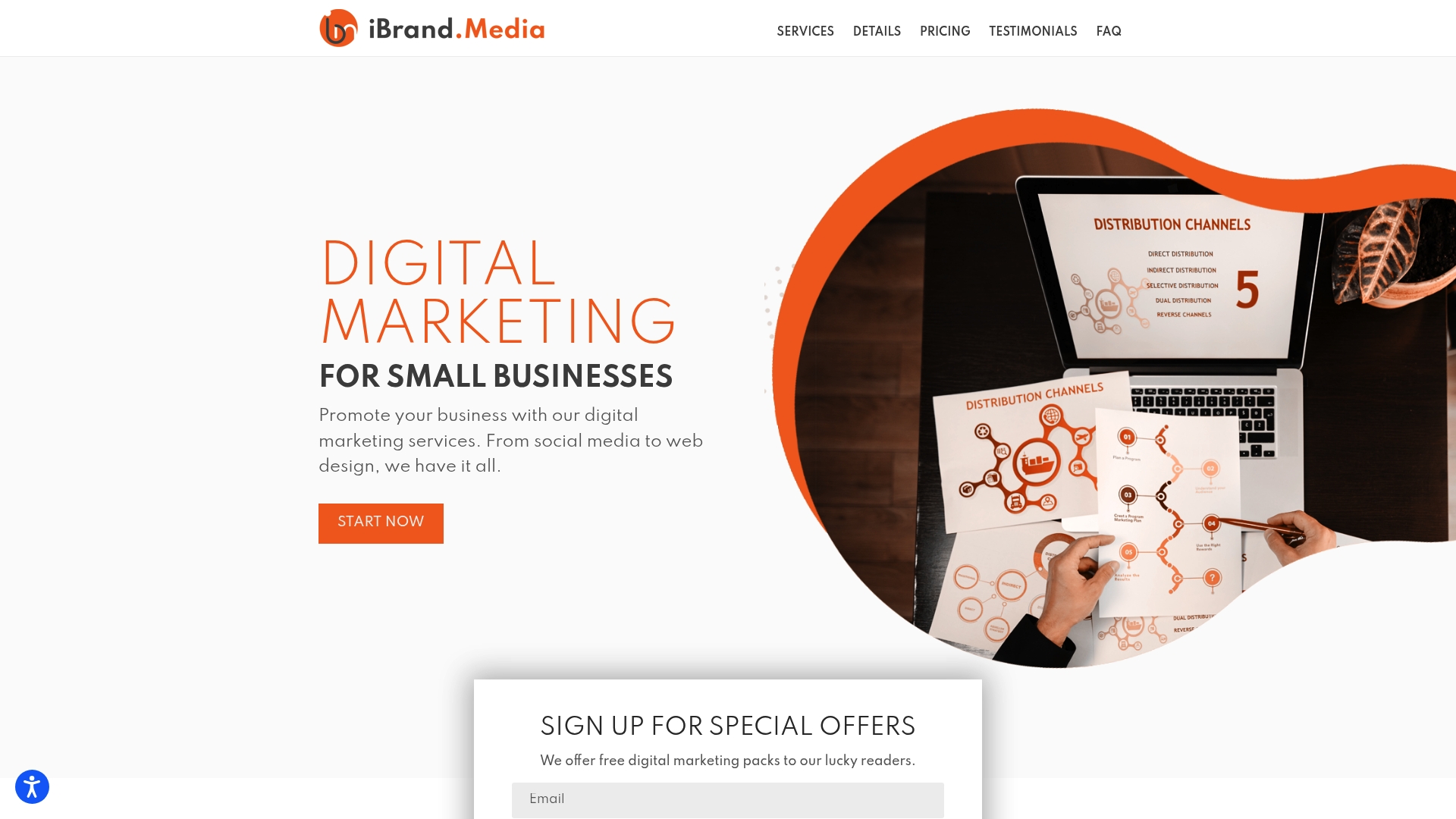Did you know that nearly 90 percent of users leave a website after a bad experience? Every click, scroll, and glance shapes how visitors feel about your digital presence. Understanding what truly matters to users can be the difference between a thriving business and a forgotten site. By focusing on factors like navigation, content, trust, and mobile usability, you can craft an online environment that keeps people coming back.
Table of Contents
- Defining Website User Experience Factors
- Core Elements Of UX For Business Sites
- Navigation, Content, And Accessibility Principles
- Mobile Usability And Responsive Design Essentials
- Common UX Mistakes And How To Avoid Them
Key Takeaways
| Point | Details |
|---|---|
| User Experience Matters | Effective website design transcends aesthetics, focusing on navigation, content, performance, and trust to enhance user satisfaction. |
| Core UX Elements | Businesses should prioritize usability, accessibility, and credibility to deliver a seamless and engaging online experience. |
| Responsive Design is Essential | Adopting responsive design is critical for mobile usability, ensuring consistency across devices and enhancing user engagement. |
| Avoid Common Pitfalls | Common UX mistakes include cluttered navigation and slow load times; addressing these can significantly improve user retention and conversion rates. |
Defining Website User Experience Factors
Website user experience is the comprehensive journey a visitor encounters when interacting with a digital platform. According to the Understanding User Experience in Web Design guide, user experience goes far beyond just visual aesthetics – it’s about creating meaningful, efficient interactions that meet user needs and expectations.
Research from the Webreep model identifies four critical website satisfaction factors that directly impact user experience:
- Navigation: How easily users can move through and search a website
- Content: The quality and relevance of information presented
- Performance: Website speed and visual appeal
- Trust: The perceived credibility and reliability of the website
At its core, user experience represents the emotional and practical response users have when engaging with a digital platform. As defined by Wikipedia, it encompasses “all aspects of the end-user’s interaction with a company, its services, and its products” – a holistic view that considers not just what users see, but how they feel and interact with a website. By strategically addressing these key factors, businesses can create digital experiences that are not just functional, but genuinely engaging and user-centric.
Core Elements of UX for Business Sites
Building an effective website for business requires understanding the core elements of user experience. According to research from Ohio University, seven critical factors define a positive digital interaction: usability, usefulness, accessibility, desirability, credibility, findability, and value. These elements work together to create a seamless and engaging online experience that meets user expectations and business goals.
Let’s break down these core UX elements for business websites. Website Design Basics for Local Businesses highlights how each component plays a crucial role:
Here’s a summary of the core UX elements for business websites:
| UX Element | Definition | Key Benefit |
|---|---|---|
| Usability | Ease of navigation and interaction | Simple user journeys |
| Usefulness | Delivers relevant, valuable info | Meets user needs |
| Accessibility | Usable for all abilities | Inclusive experience |
| Desirability | Pleasing, emotionally engaging design | Enhances brand perception |
| Credibility | Trust through professionalism and transparency | Builds user trust |
| Findability | Content is easy to locate | Reduces search frustration |
| Value | Provides meaningful solutions | Supports business goals |
- Usability: How easily users can navigate and interact with your site
- Usefulness: Providing relevant, valuable information that solves user problems
- Accessibility: Ensuring the website is easy to use for people with different abilities
- Desirability: Creating an aesthetically pleasing and emotionally engaging design
- Credibility: Building trust through professional presentation and transparent information
- Findability: Making content easy to discover and search
- Value: Delivering meaningful content and solutions that meet user needs
For small businesses, mastering these UX elements isn’t just about looking good – it’s about creating a digital experience that converts visitors into customers. By strategically addressing each of these factors, businesses can develop websites that are not just functional, but truly user-centric and effective at achieving their online goals.
Navigation, Content, and Accessibility Principles
Effective website design hinges on three critical principles: navigation, content, and accessibility. According to research from UX Matters, a well-designed information architecture enables users to effortlessly find what they need and complete their key tasks with minimal friction. When these principles work in harmony, they create a seamless digital experience that meets user expectations and business goals.
Navigation is the roadmap of your digital platform. Content Marketing for Beginners highlights how critical clear pathways are for user engagement. The key navigation principles include:
- Intuitive menu structures
- Clear, descriptive link labels
- Consistent placement of navigation elements
- Minimal clicks to reach important information
- Responsive design across different devices
Content and accessibility are equally crucial. Effective content must be:
- Relevant and valuable
- Easy to read and understand
- Structured with clear headings
- Optimized for different user needs
- Inclusive of alternative text for images
Accessibility ensures that websites are usable by people with diverse abilities, including those using screen readers, experiencing color blindness, or having motor skill limitations. By prioritizing these principles, businesses create digital experiences that are not just functional, but truly welcoming and user-centric.
Mobile Usability and Responsive Design Essentials
Mobile usability has become the cornerstone of digital experiences in today’s smartphone-driven world. According to research from Experience Strategy, digital platforms must create meaningful and impactful experiences that align with long-term growth, with responsive design playing a critical role in achieving this goal.
Responsive design is not just about making websites look good on different devices. Understanding Mobile-Friendly Websites reveals that it’s about creating a seamless user experience across smartphones, tablets, and desktops. The key principles include:
- Flexible grid layouts
- Scalable images and media
- Adaptive typography
- Touch-friendly navigation
- Performance optimization
Good information architecture is fundamental to mobile usability. This means:
- Logical content hierarchies
- Clear categorization
- Multiple intuitive navigation paths
- Simplified menus
- Prioritizing critical information
Successful mobile design considers user context, screen limitations, and interaction methods. By prioritizing responsive principles, businesses ensure their digital platforms are accessible, engaging, and effective across every device – transforming casual visitors into committed users.
Common UX Mistakes and How to Avoid Them
User experience can make or break a website’s success. According to research from Profile Tree, poor usability directly impacts a business’s bottom line, with users abandoning websites within seconds if they can’t quickly find what they need or if pages load slowly.
Website Design Tips for Beginners highlights the most common UX mistakes that businesses should avoid:
- Cluttered and confusing navigation
- Inconsistent design across pages
- Slow page loading times
- Non-responsive mobile design
- Overwhelming or irrelevant content
- Lack of clear call-to-action buttons
- Ignoring user feedback and analytics
Effective UX design prioritizes user needs and simplifies interactions. To avoid these pitfalls, businesses must focus on:
- Streamlining navigation
- Maintaining visual consistency
- Optimizing website performance
- Ensuring mobile responsiveness
- Creating focused, valuable content
- Implementing clear and compelling calls-to-action
- Continuously gathering and implementing user feedback
By proactively addressing these common mistakes, businesses can create digital experiences that not only retain users but transform them into loyal customers. The key is to always put the user’s needs and experience at the forefront of design decisions.
Ready to Transform Your Website’s User Experience?
You have just discovered how critical factors like navigation, content quality, and mobile usability can make or break your website’s success. The truth is, small design mistakes or outdated user flows can drive potential customers away before you have a chance to connect. If you feel your website is not living up to your expectations, or if you are facing issues like slow loading times, difficult navigation, or a lack of trust from visitors, you are not alone. Many business owners struggle to create seamless and engaging digital journeys that truly capture their audience.

Stop letting these obstacles hold your business back. Partner with the experts at ibrand.media to turn every online interaction into a powerful opportunity. Our team specializes in crafting websites that meet the highest standards for usability, accessibility, and credibility. Explore more ways to improve your digital presence on our Uncategorized | Ibrandmedia resource page. Take the first step—contact us now for a personalized consultation and start seeing real results today.
Frequently Asked Questions
What are the key factors that influence website user experience?
User experience is influenced by four critical factors: navigation, content, performance, and trust. These elements determine how easily users can navigate a site, the quality of information provided, the site’s speed, and the credibility perceived by users.
How can businesses improve the usability of their websites?
Businesses can improve usability by creating intuitive navigation, ensuring relevant and useful content, and optimizing site performance. This includes simplifying menus, using clear headings, and ensuring the site loads quickly across devices.
What principles should be followed for effective website navigation?
Effective website navigation should be intuitive, with clear link labels and consistent placement of navigation elements. It’s important to minimize the number of clicks required to find information and ensure responsiveness across devices.
Why is mobile usability important for my website?
Mobile usability is important because many users access websites through smartphones and tablets. A responsive design creates a seamless experience across all devices, ensuring that users can easily navigate and engage with content, regardless of the screen size.

Recent Comments